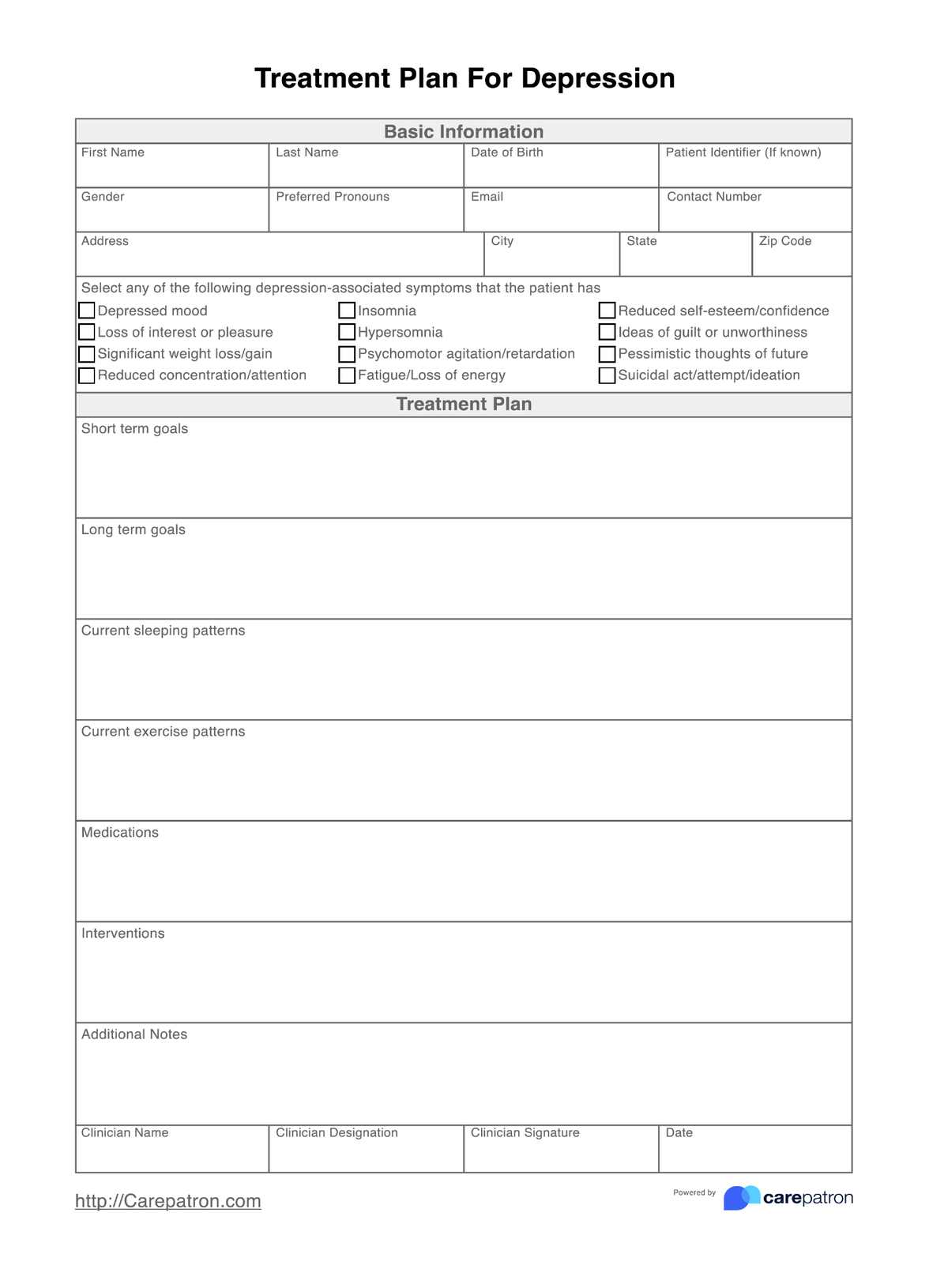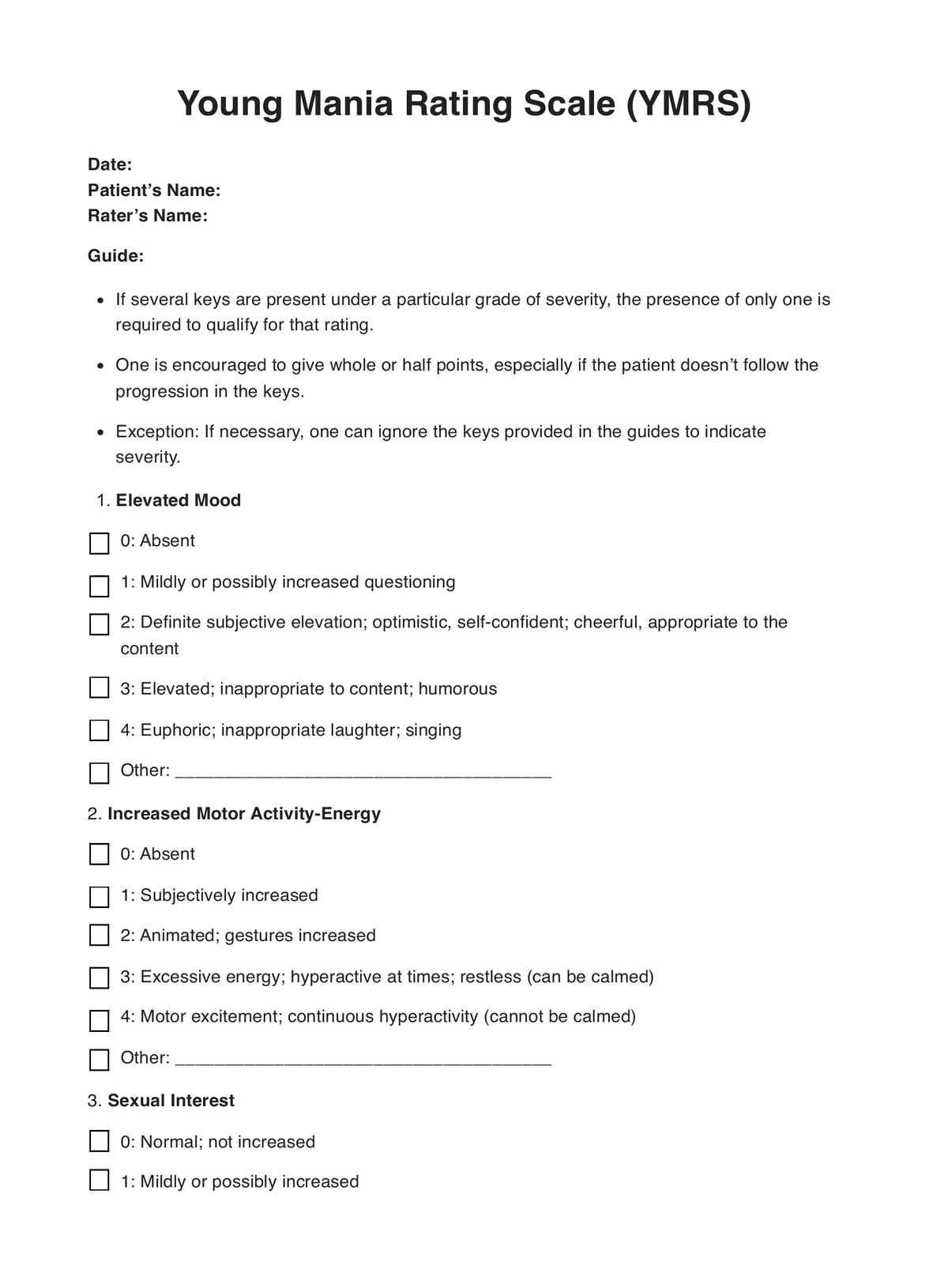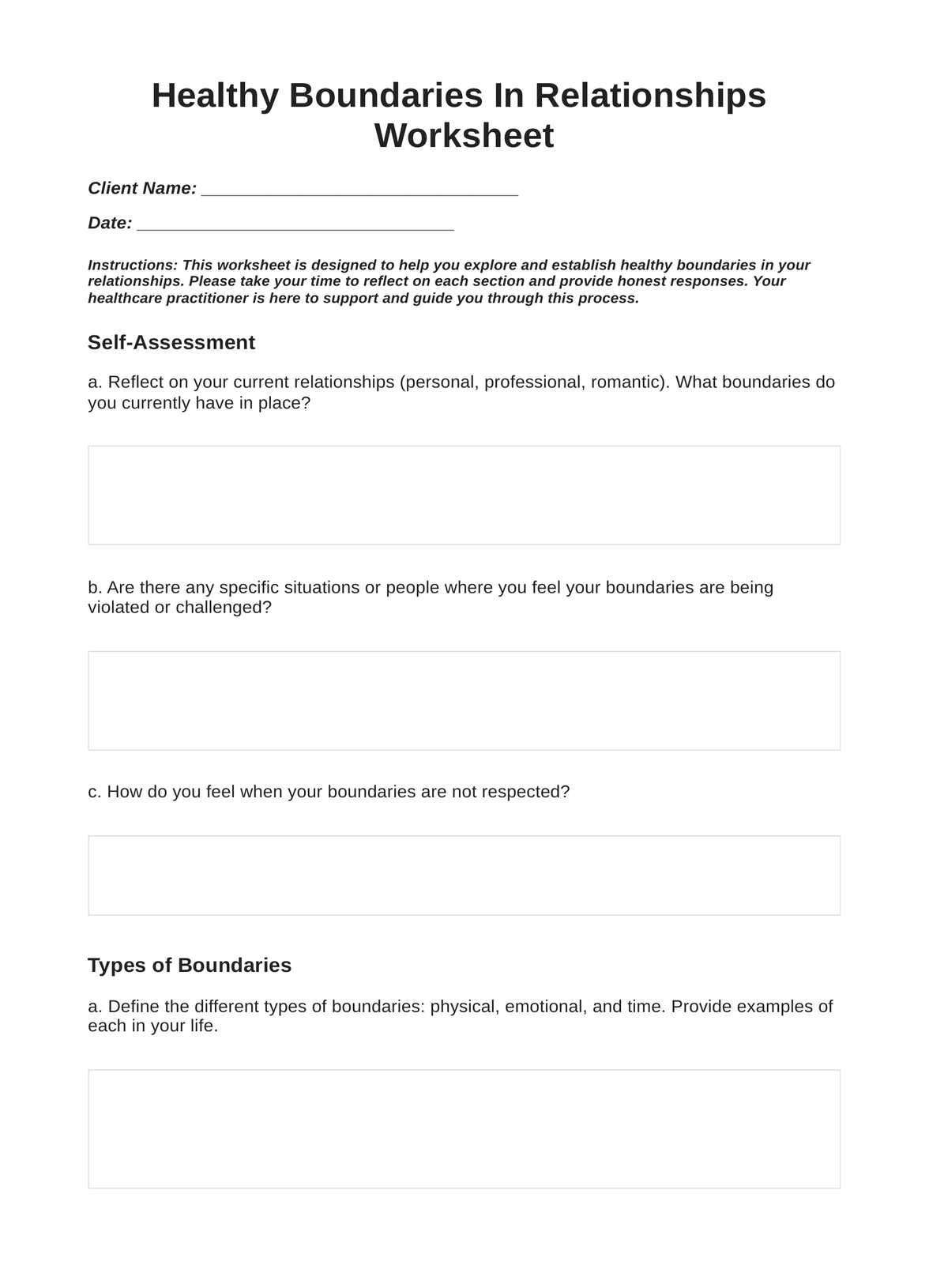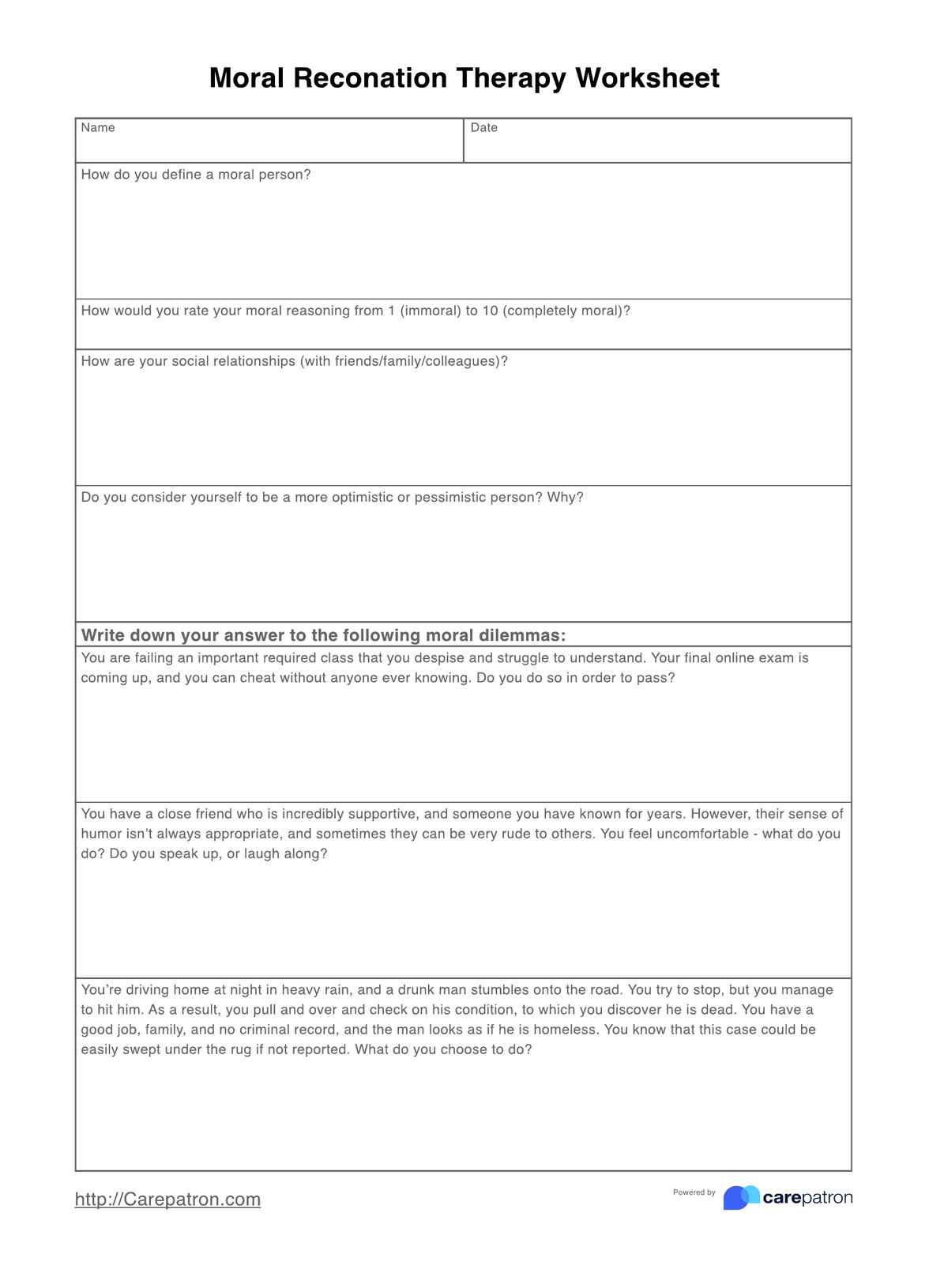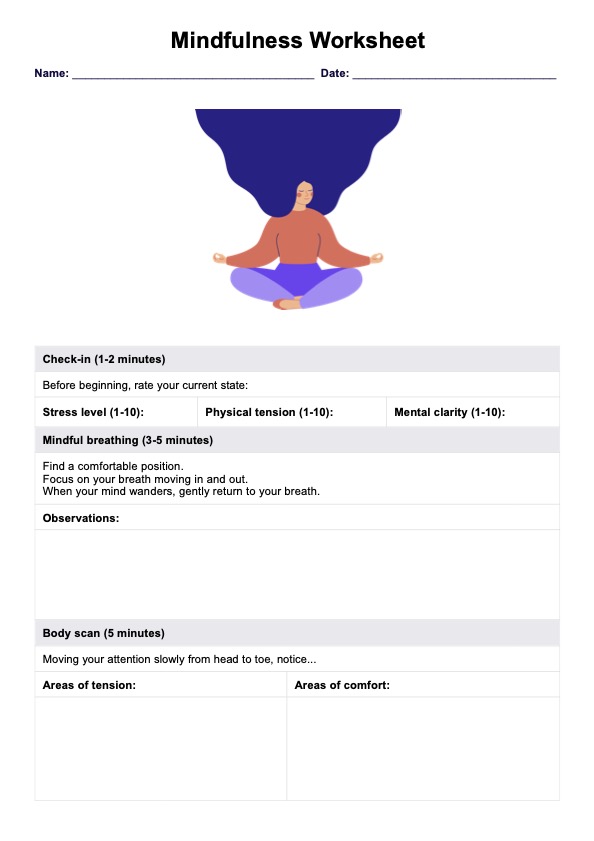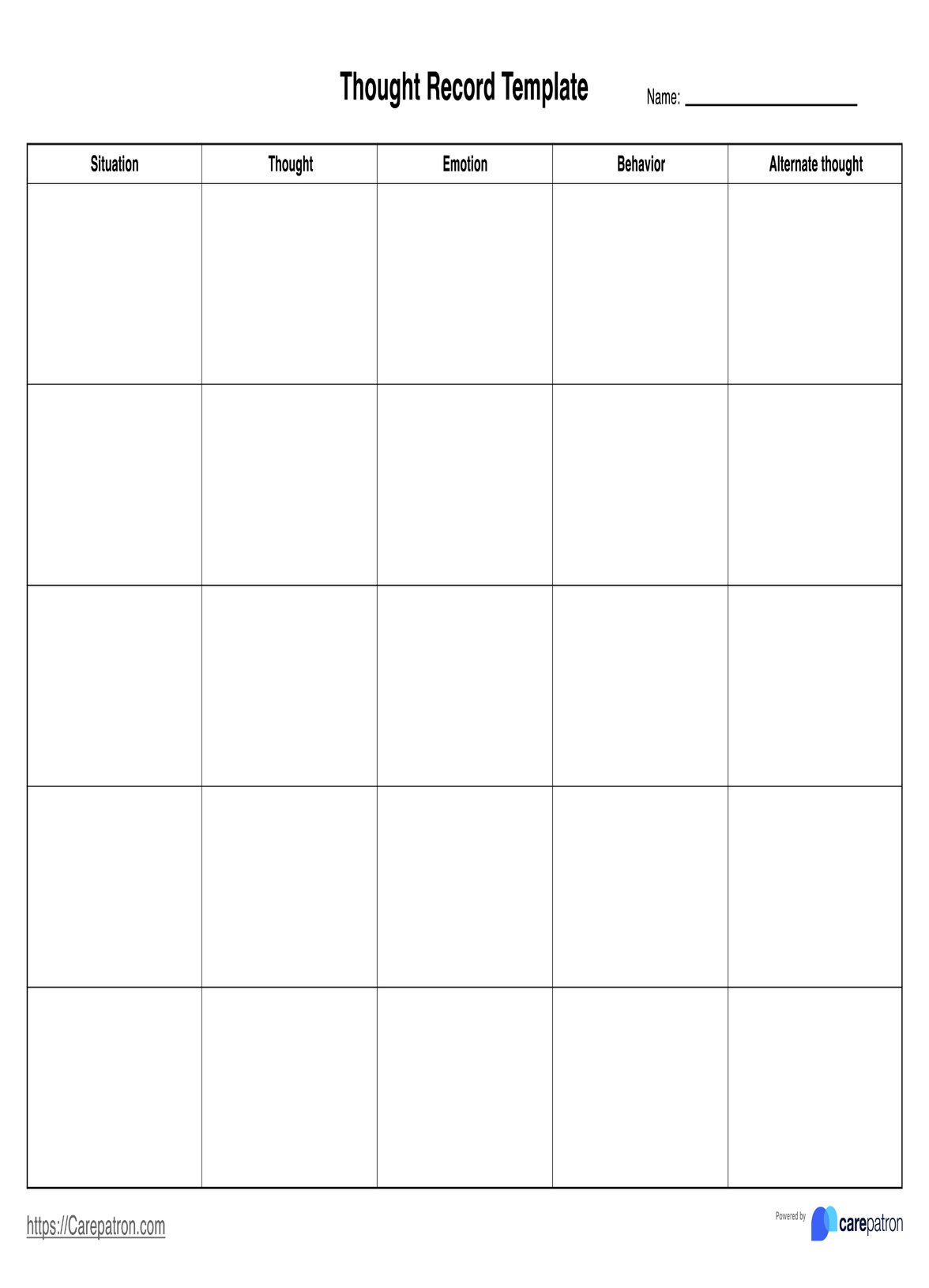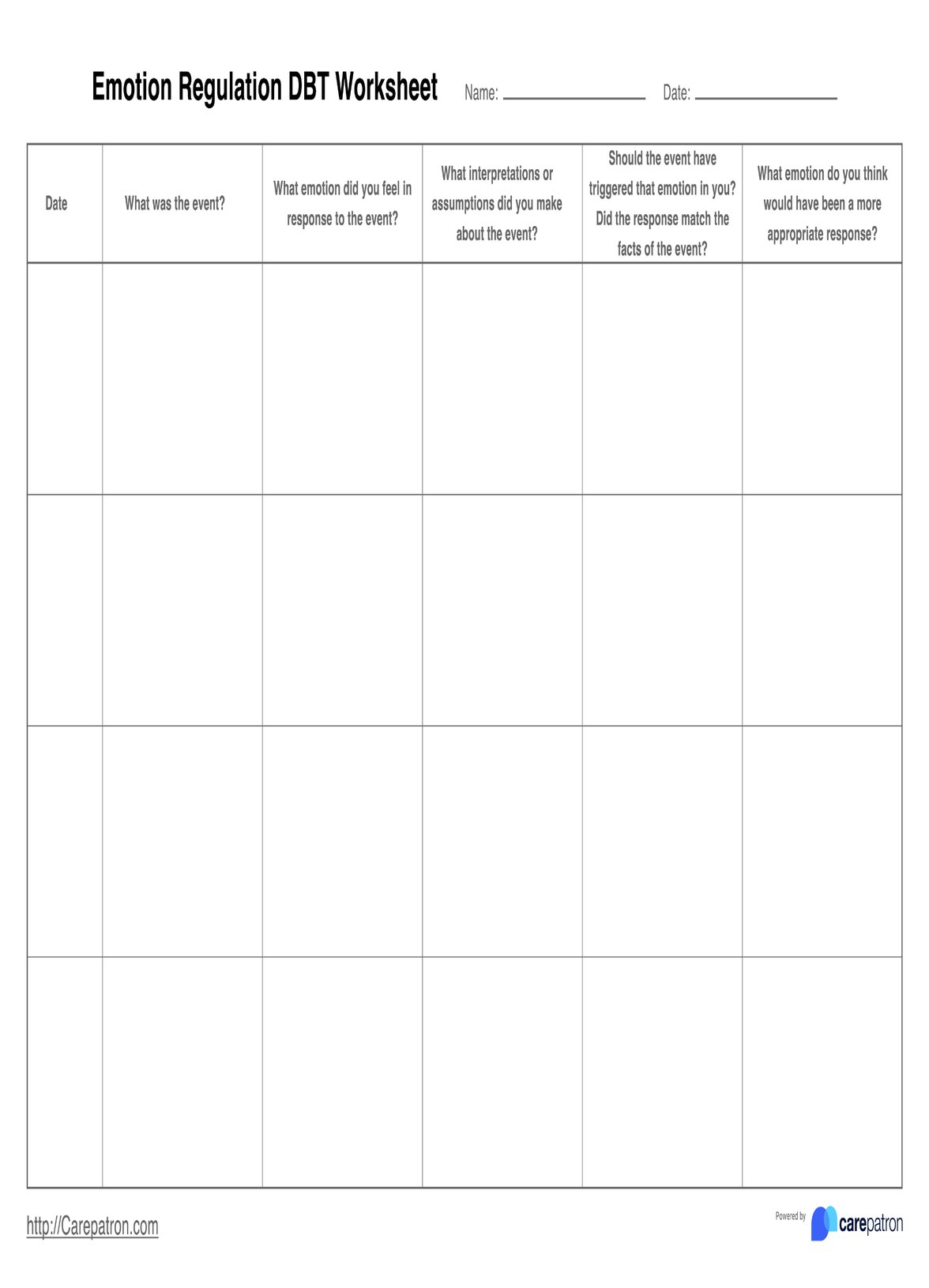Exposure Response Prevention Worksheet
Discover our comprehensive Exposure Response Prevention Worksheet to help you and your therapist effectively manage OCD and anxiety symptoms. Download our free PDF today!


What is Exposure Response Prevention?
Exposure Response Prevention (ERP) is a cognitive-behavioral therapy specifically designed to treat obsessive-compulsive disorder (OCD) and other anxiety-related disorders. The central concept of ERP involves exposing an individual to the thoughts, images, objects, or situations that trigger their anxiety or obsessions. During this exposure, the person is encouraged to refrain from engaging in compulsive behaviors (responses) typically used to alleviate anxiety.
ERP aims to help the person learn that their fears are unfounded or can tolerate the anxiety without resorting to compulsive behaviors. Over time, this repeated exposure and prevention of the response can help reduce the intensity and frequency of the person's anxiety and compulsions. An Exposure Response Prevention worksheet is a valuable tool that can help the client and therapist track the progress of ERP therapy.
Exposure Response Prevention is a highly effective and evidence-based therapy technique widely studied and recognized for its success in treating OCD and anxiety disorders. By challenging the irrational beliefs and fears associated with anxiety and obsessions, ERP allows clients to gradually confront and overcome their fears in a controlled and supportive environment.
As a result, clients develop healthier coping mechanisms and thought patterns, significantly improving their overall mental health and quality of life. Using ERP worksheets, in conjunction with the guidance of a trained therapist, can significantly enhance the therapeutic process, promoting long-lasting recovery and positive outcomes.
Exposure Response Prevention Worksheet Template
Exposure Response Prevention Worksheet Example
How does this Exposure Response Prevention worksheet work?
The Exposure Response Prevention (ERP) worksheet is a practical and efficient tool designed to assist clients and therapists in implementing and tracking the progress of ERP therapy. It provides a structured format to help identify triggers, thoughts, beliefs, and feared outcomes, log exposure exercises and monitor anxiety levels.
In this section, we will walk you through the steps involved in using and filling out the ERP worksheet, making it easy to understand and utilize in your therapeutic journey.
Step 1: Fill out the Identifying Triggers, Thoughts, Beliefs, and Feared Outcomes section
In this section, the client writes down specific triggers, obsessive thoughts, beliefs, compulsive activities, and feared outcomes related to their OCD or anxiety. This process helps identify patterns and connections between these elements.
Step 2: Develop an exposure hierarchy with your therapist
Work with your therapist to create a list of exposure exercises ranked from least to most anxiety-provoking. Start with a little anxiety-provoking exercise and gradually work your way up the hierarchy.
Step 3: Log exposure exercises in the Exposure Log section
When performing an exposure exercise, use the Exposure Log section to record the date, exposure exercise, time spent, anxiety level (rated from 1 to 10), and any relevant notes, such as how long the client resisted engaging in compulsive behaviors.
Step 4: Gradually increase exposure time and difficulty
As anxiety levels decrease, practice exposure exercises regularly and increase the time spent on each exercise.
Step 5: Review progress with your therapist
Regularly review your progress with your therapist and adjust exposure exercises as needed.
When to use these worksheets for Exposure Response Prevention Recovery?
These worksheets are designed to support individuals undergoing ERP therapy and should be used with guidance from a trained mental health professional. Here are some specific situations when these worksheets can be handy for ERP recovery:
Beginning ERP therapy
When clients start ERP therapy, these worksheets can help them identify and document their triggers, thoughts, beliefs, compulsive activities, and feared outcomes. This information provides a therapy starting point and can help the client and therapist tailor the treatment plan.
During regular therapy sessions
Clients and therapists can use the worksheets during regular therapy sessions to review and discuss progress, address concerns, and adjust the treatment plan. This ongoing documentation and analysis can help ensure the therapy remains effective and targeted to the client's needs.
Between therapy sessions
Clients can use the worksheets to practice exposure exercises independently between therapy sessions. This consistent practice can help maintain progress and reinforce the lessons learned during therapy sessions.
Monitoring progress over time
Regular use of the worksheets can help clients and therapists track progress over time and identify any patterns, improvements, or areas that need further attention. This longitudinal analysis can be invaluable in fine-tuning the therapy and ensuring its long-term success.
Transitioning out of therapy
As clients approach the end of their ERP therapy, the worksheets can help them evaluate their progress and develop a plan for maintaining the gains made during therapy. The worksheets can continue to be used as a self-help tool even after therapy has concluded, assisting clients in managing any future symptoms or relapses.
It is essential to remember that these worksheets are intended to be used in conjunction with the guidance of a trained mental health professional. Attempting ERP therapy without professional support may not yield the desired results and could exacerbate symptoms.
Who is this printable Exposure Response Prevention worksheet PDF for?
This Exposure Response Prevention (ERP) worksheet is designed for various individuals involved in treating OCD and anxiety-related disorders. The primary users of this worksheet are clients participating in ERP therapy and their therapists. However, it can benefit a range of mental health practitioners who may use this tool to support their clients. These professionals include:
Psychologists
Clinical psychologists specializing in cognitive-behavioral therapy can use this worksheet when working with clients diagnosed with OCD or other anxiety disorders. The worksheet can help them track their clients' progress and adjust the therapeutic approach.
Psychiatrists
While psychiatrists often focus on the medical aspects of treatment, they can also use this worksheet as a supplementary tool when collaborating with other mental health professionals or monitoring their patients' progress in therapy.
Counselors
Licensed professional counselors and clinical social workers who work with individuals experiencing anxiety-related disorders can benefit from using this worksheet. It can help them systematically address clients' triggers and compulsions while promoting a structured therapeutic approach.
Marriage and family therapists
In some cases, OCD or anxiety disorders can impact family dynamics. Marriage and family therapists can use this worksheet when working with clients who need to address the impact of their symptoms on their relationships.
School psychologists or educational therapists
For students struggling with OCD or anxiety disorders, this worksheet can be a valuable tool to address their symptoms in an educational setting. It can help them develop coping strategies and monitor their progress throughout treatment.
In summary, the printable Exposure Response Prevention worksheet PDF is a versatile tool that can be utilized by various mental health practitioners working with clients experiencing OCD and anxiety-related disorders. By using this worksheet, professionals can better understand their clients' challenges and track their progress in a structured, organized manner.
.png)
Benefits of free Exposure Response Prevention worksheets
Exposure Response Prevention (ERP) therapy effectively treats obsessive-compulsive disorder (OCD) and other anxiety-related conditions. To further enhance the therapy process and maximize its benefits, using free Exposure Response Prevention worksheets can be an invaluable resource. These worksheets offer numerous advantages for clients and therapists, making the therapeutic journey more organized, insightful, and accessible.
Explore the five benefits of using free ERP worksheets in your treatment plan.
Organized tracking
Worksheets provide a structured way to track progress and record exposure exercises, making reviewing and adjusting therapy easier.
Increased self-awareness
Filling out the worksheet helps clients better understand their triggers, thoughts, beliefs, and feared outcomes, promoting self-awareness and growth.
Facilitates communication
Sharing the worksheets with therapists can improve communication and collaboration between client and therapist.
Encourages consistency
Using the worksheets regularly can help clients maintain consistency in their ERP practice, promoting more effective recovery.
Easily accessible
Free, printable worksheets are readily available, making them simple for clients and therapists to access and use.
Commonly asked questions
To use the worksheet, follow the step-by-step instructions provided in the guide. Begin by filling out the Identifying Triggers, Thoughts, Beliefs, and Feared Outcomes section, and then work with your therapist to develop an exposure hierarchy. Log your exposure exercises in the Exposure Log section and review your progress regularly with your therapist.
Interpret the worksheet by analyzing the patterns and connections between triggers, thoughts, beliefs, compulsive activities, and feared outcomes. With your therapist's guidance, evaluate your progress in managing anxiety and reducing compulsive behaviors over time.
The worksheet serves as a tool for tracking and documenting the progress of ERP therapy. It helps clients and therapists to identify triggers, thoughts, beliefs, compulsive activities, and feared outcomes, as well as to log exposure exercises and measure anxiety levels. This information can then be used to adjust therapy and improve overall effectiveness.


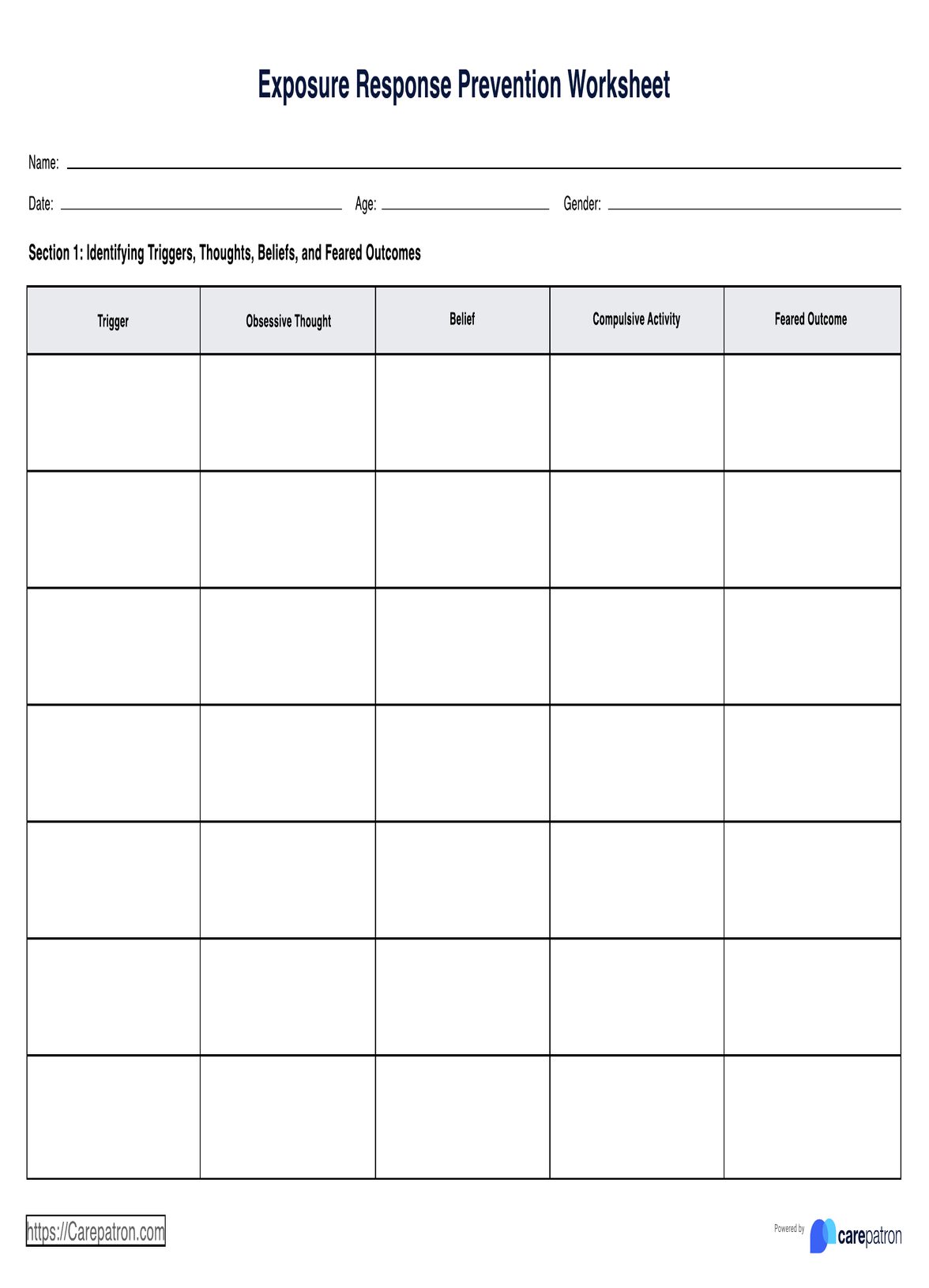
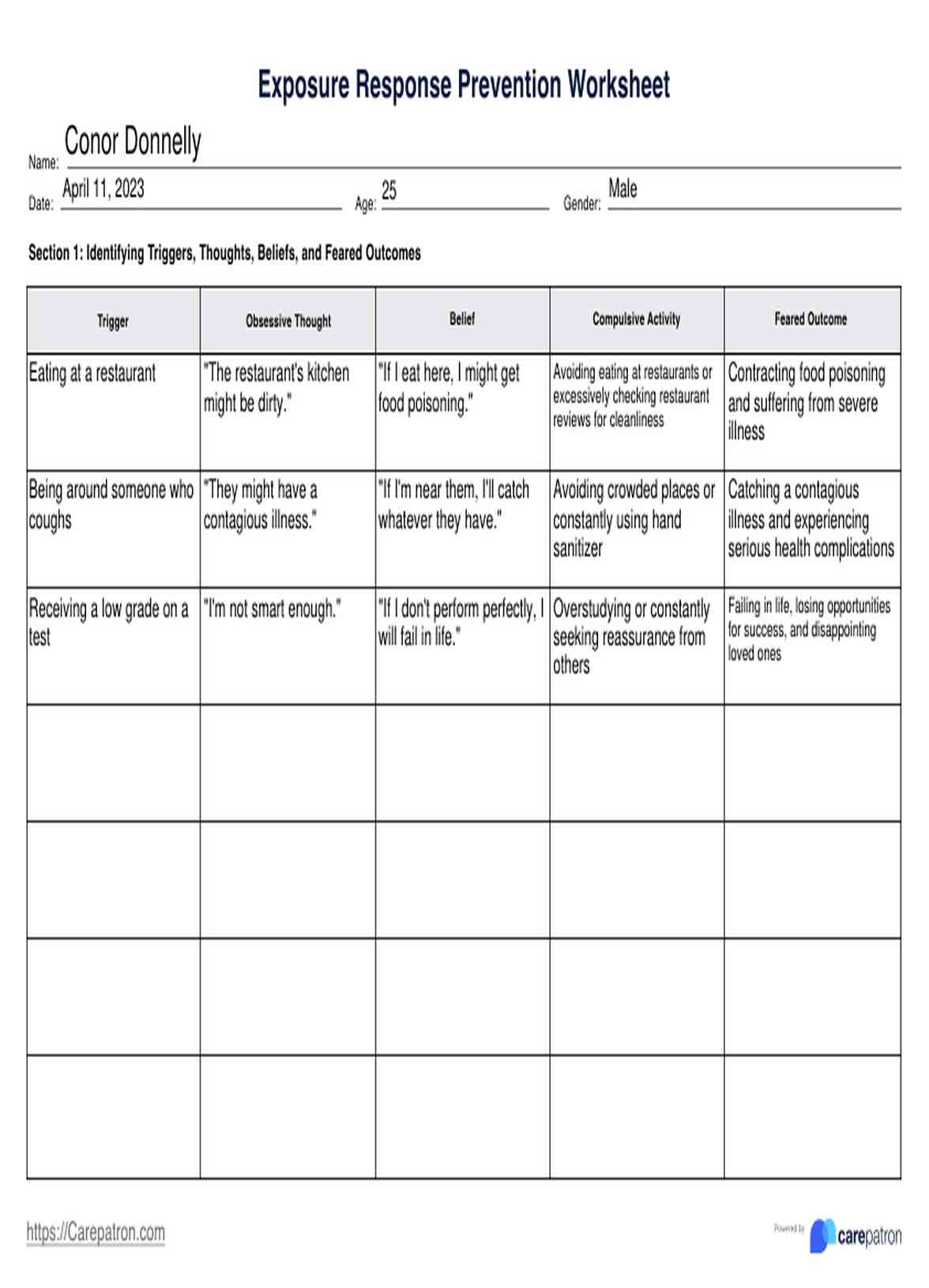














-template.jpg)






















































































